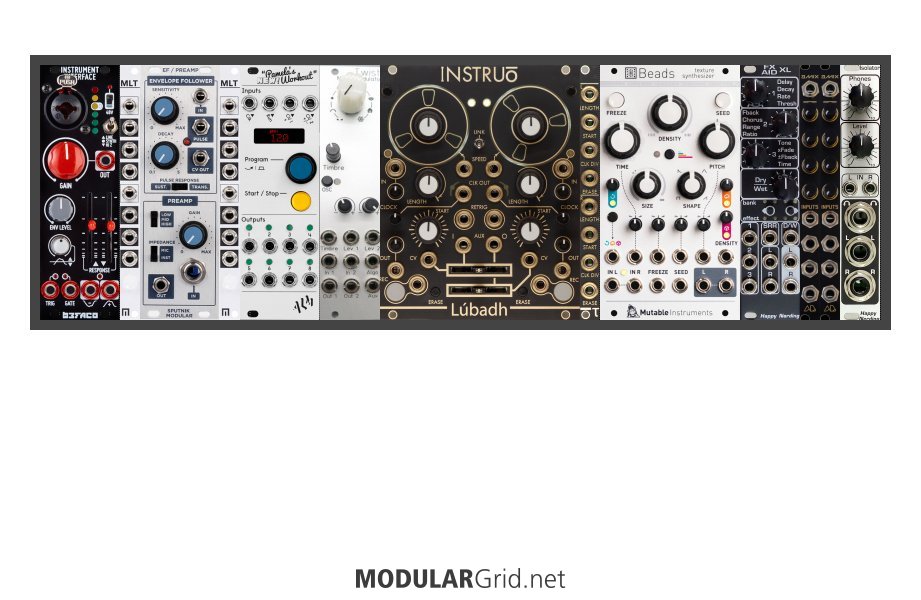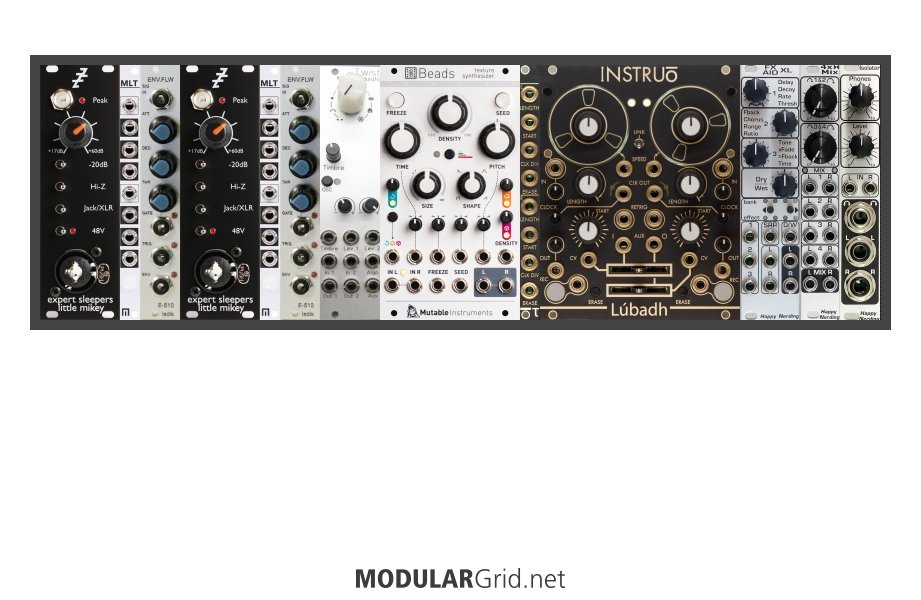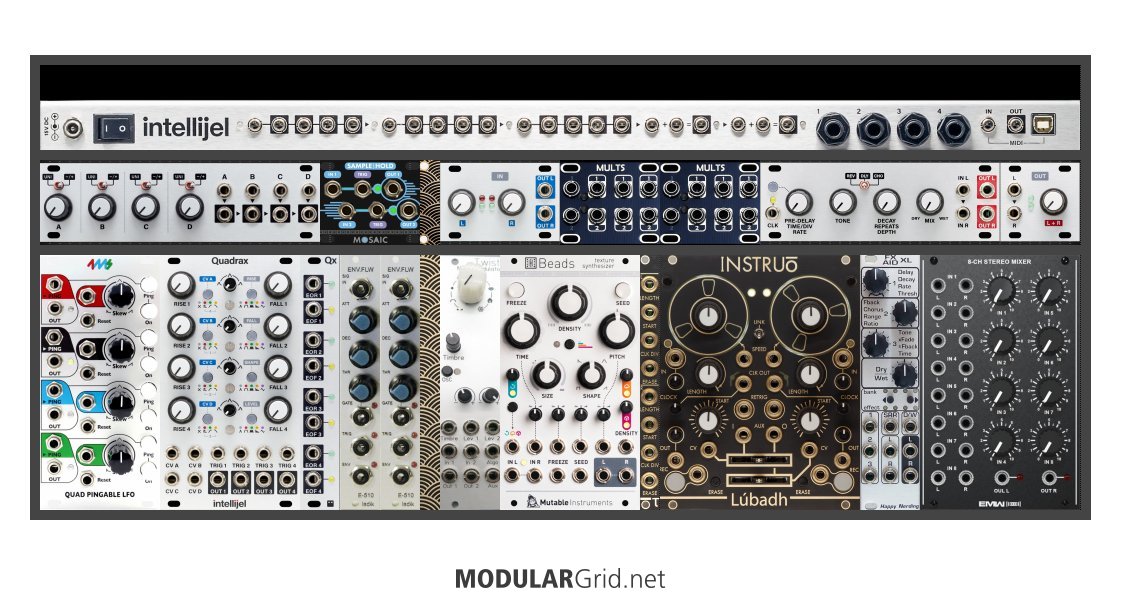Hello all,
I've been playing/recording music for close to 20 years and am finally ready to make the plunge into modular.
The core of the system is the idea of having two stubby condensor mics on either side of the case that connect (almost) directly to the Little Mikey modules that each provide audio to the Lubadh in a neat stereo fashion. I could plug almost directly, just using a stubby adapter, two audio technica at4022 mics. Alternatively (or additionally) I could bring in signal from a guitar, the SP404, a synth, or whatever else into the stereo-in on the AA.1 module or the Little Mikey. From there, the Lubadh provides tape-like looping which can be shaped by the Three Sisters filter, then sent to the Beads module for color. Beads' scale is controlled by Scales and timing is controlled by Pamela's. Pam will also control the timing on the loops from Lubadh, as well as plenty of knob turning by me, I'm sure.
I don't know if the Scales module is really necessary or if it's redundant since I also have Scales. My undestanding is that Pamela's can do much of what Scales does, but I haven't quite worked that out in looking into the module. It seems like Scales will be more immediate with Pamela's keeping everything well in sync.
If Scales is unnecessary, I'm not sure what to replace it with. The whole thesis on this is that outside audio sources provide the audio. I could see having a drum machine focused on basic percussion to give some sense of rhythm,or even more inputs/mixers. I'm not really sure where to go there.
The future plan is to also build a rack that is more of an audio source and could be used in conjunction with this...so I understand that eventually I'll want some oscillators, and they will come, but on a separate rack.
I've been interested in doing more field recordings and finding a way to capture music more 'on the fly.'
With $10k or so in outside sound sources accumulated through the last 20 years in synths, guitars, etc. I want the focus of this to be using my existing gear in unique ways.
All of this will go into a Nifty 84hp powered case, so I should be able to come midi-in and get my clock from there.
Again, I'm a newbie to this world. The most modular instrument I have is my Moog Grandmother, which I think will play nicely with this. The music from this would be more in the realm of ambient with a health dose of taking in sound from the outside. My yard backs up to a state park and I have a deck with the ability to run power to it that I can use to capture some interesting sounds.
Thoughts? And some of my music FWIW: https://open.spotify.com/artist/3c1bvfJea35k5ZJZVkIPtP




